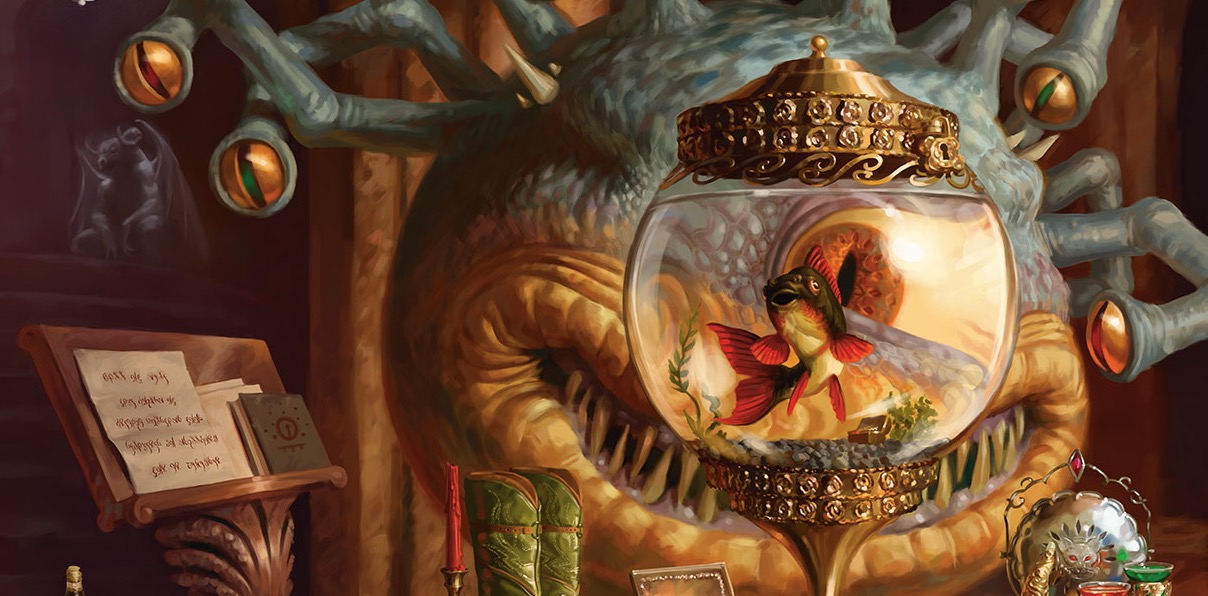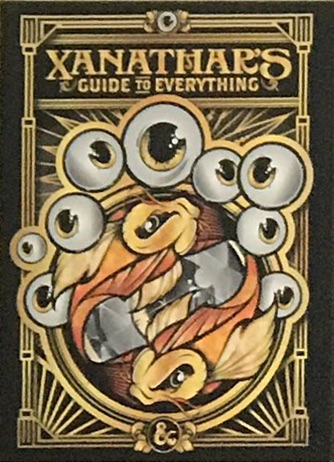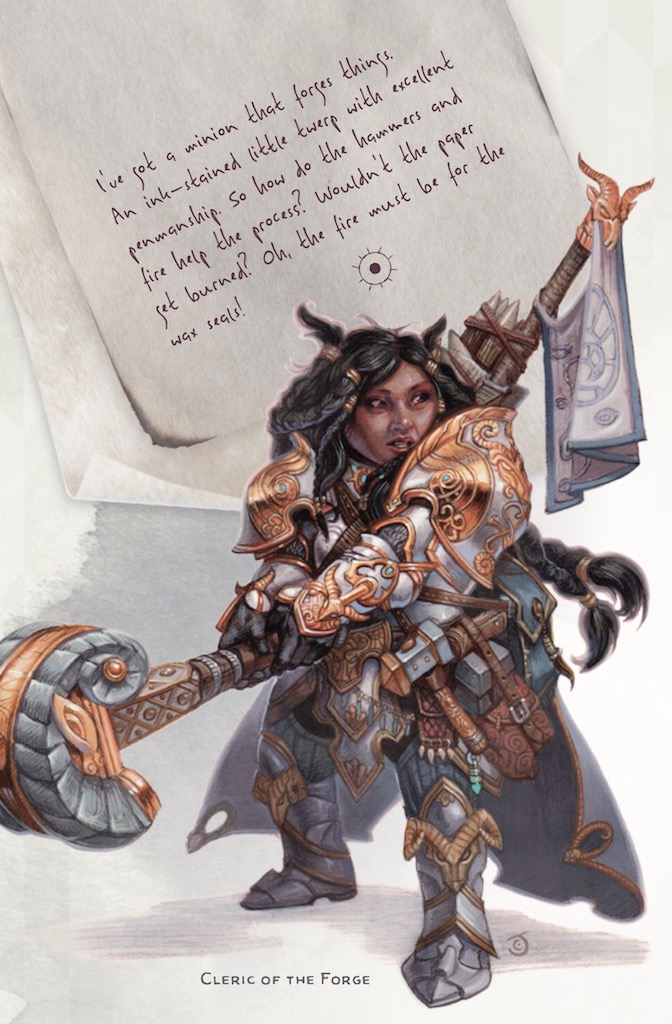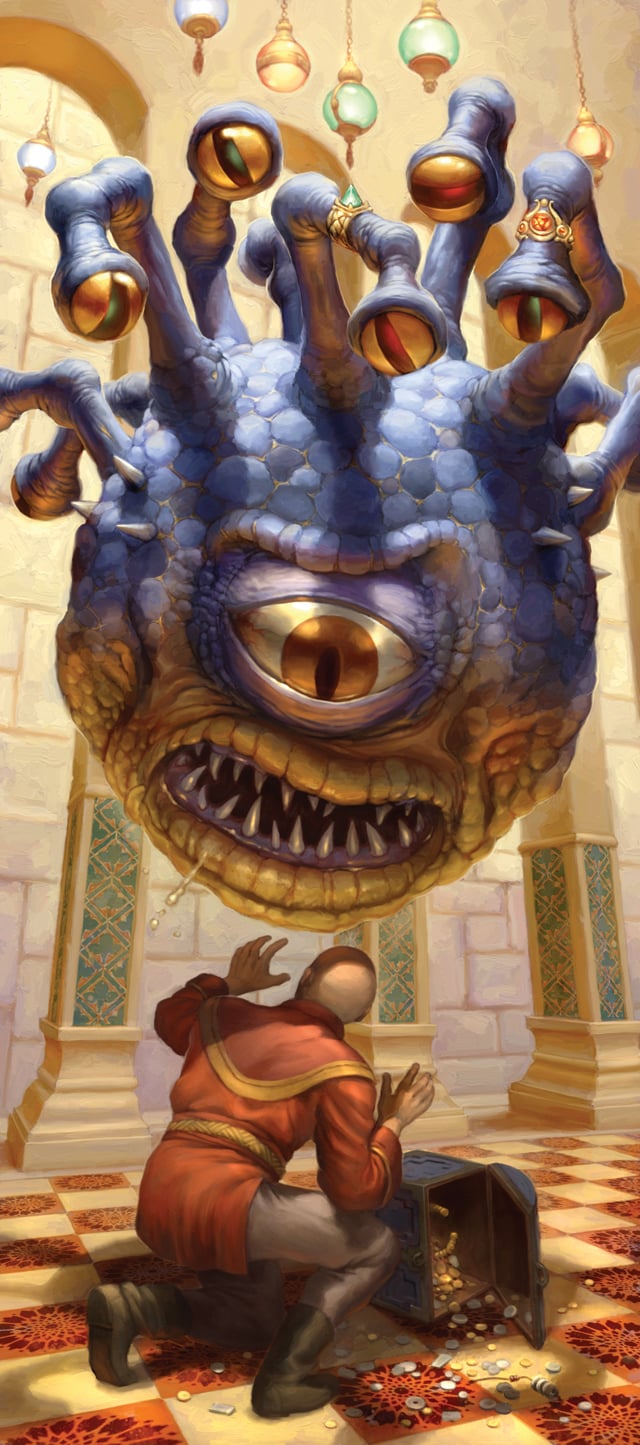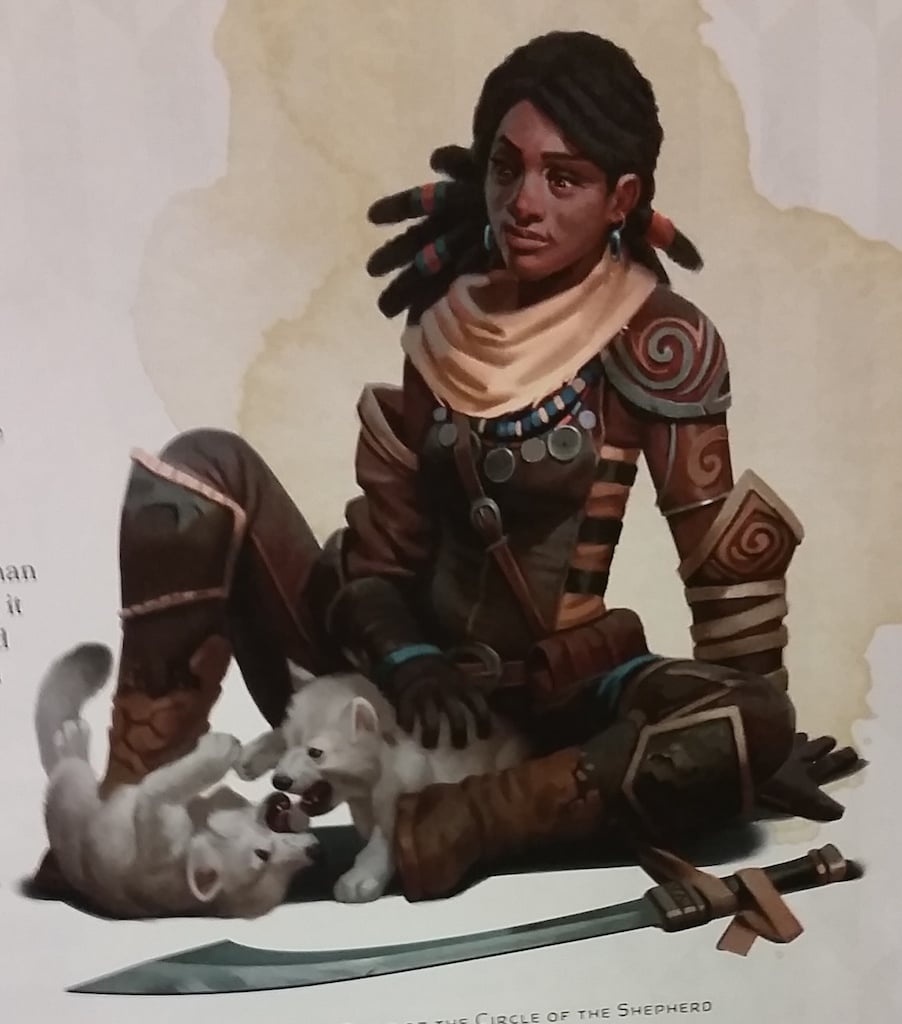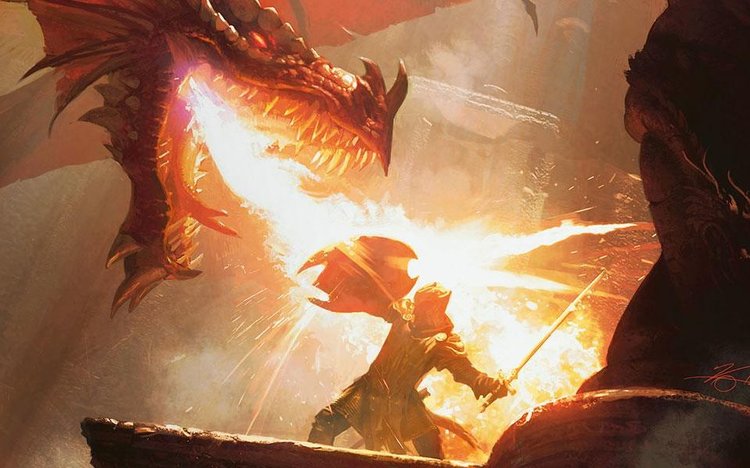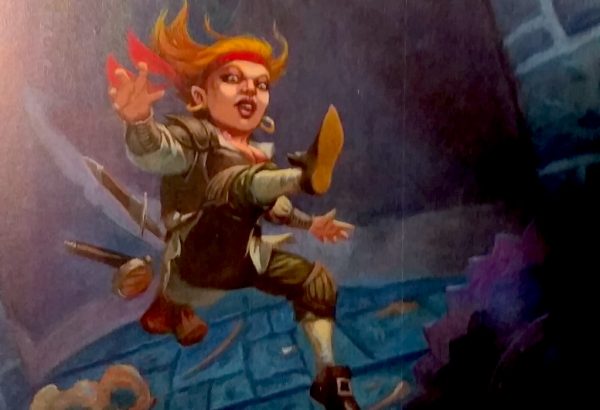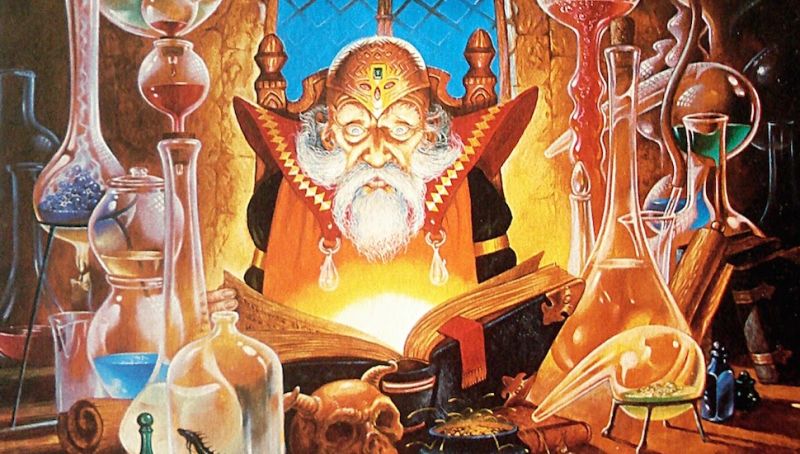Xanathar’s Guide to Everything – The BoLS Review

Xanathar’s Guide to Everything adds a lot to D&D 5th Edition. Here’s why you should be excited.
Xanathar’s Guide to Everything is the first major expansion for D&D 5th Edition. It’s unique in that we’ve been following its development for about a year now–as I scroll back through the archives, I see that the first few Unearthed Arcana articles with expanded class options were coming out right around this time last year. And not long after came the surveys, the player feedback, the tweaks, the revisions–and now here we are, book in hand.
And having had a chance to look through it, I can safely say Xanathar’s Guide is really good you guys. Sure there’s a little to be desired–the book feels a little short overall, and some of the content feels a little like filler, but overall the book is a solid win in the D&D Sourcebook Department. Xanathar’s Guide to Everything feels like an evolution of the style we saw in last year‘s Volo’s Guide to Monsters. The book itself is filled with subclasses, rules, spells, and commentary from The Xanathar. And the commentary is exactly what you’d expect from a crazy, paranoid, arrogant crime boss of an Eye Tyrant.
Some people might find the humor of Xanathar’s missives to be a little off-putting, but I’m a big fan. I think it speaks to the fact that Wizards understands that we want some character and levity to be mixed in with the high adventure. It opens up the tone of the game, blending light-hearted quips with artwork that depicts grim and serious heroes–there’s a full spectrum of tones to play with in the game, and it feels like WoTC is acknowledging it and setting an example for how it might be done in-game. Even if I don’t laugh at all of the notes, they never feel like they undercut the book–a big part of this is that the humor comes from the character–it’s never a pop culture reference, or a weird random thing, but rather from Xanathar’s personality being ridiculous. He’s allowed to be the source of humor–which in turn is a great example for fledgling GMs and players.
But you didn’t come here to read about why the side notes that add texture to the book are cool. You came here for what the notes are appended to. That’s where the real meat and potatoes of the book lie. Without a doubt the new subclasses are the biggest feature and biggest draw of the book. I highly doubt anyone’s sitting back thinking, “you know I really think I should go pick up this book so I can get some new trap rules.” I mean, the trap rules are great (more on that in a moment), but the big setpiece of this book are the subclasses. And based on that alone I feel like they’ve done a great job with Xanathar’s Guide.
Definitely not based on the fact that there’s a Beholder hovering over us right now, why would you even think that.
Now that doesn’t mean all of the subclasses are great–there are a few that feel like they could’ve used another revision, or some extra polish–fighters in particular seem to suck it up–but when the subclasses are working, they make you excited to try out the character options. They suggest ways that they can fit into the game effortlessly, which is no small feat. There’s a recurring theme in Xanathar’s Guide–cohesiveness. You’ll see it repeated in the Dungeon Master’s Sections, but in the player’s sections, the classes that feel the most exciting to play are the ones that provide ways be a better party member.
And there are a lot of those. There’s the Ancestral Guardians Barbarian who has the ability to use their reaction to negate incoming damage to their allies, or the Grave Domain Cleric who is capable of healing allies as they get dropped, or the Circle of Dreams Druid who supports the party without having to give up their action in combat. Mechanically these kinds of classes are interesting–they encourage players to stay in tune with one another for better teamwork. The Barbarian only gets one reaction to try and stop some damage, where should she use it? What spirit totem should the Shepherd Druid summon to help the party?
That said, there are definitely a few classes that fall short. As we mentioned, fighters have the short end of the stick–with both the Cavalier and the Arcane Archer feeling either unfocused or needlessly limited/underpowered for what they are capable of doing. The Rogue subclasses as well tend to flounder a bit, and the Tempest Barbarian, which I was all set to like, feels incredibly underwhelming compared to the Ancestral Guardian and Zealot counterparts. Your mileage may vary, of course, but for all the successes of the other subclasses, it makes the ones that don’t work stand out a little more.
But it’s only a few here and there. Of the 27 new classes, most are fun, exciting, or interesting to play. One of the repeated themes I noticed was the idea that you can find subclasses that let you take a more active role in between your turn on the initiative chart. I love this mechanic as it encourages players to stay engaged throughout the fight. We mentioned the Ancestral Guardian Barbarian and their ability to negate incoming damage, but there’s also the Drunken Master’s ability to cause an attack that misses to strike a nearby target instead. Or the Monster Slayer’s ability to interrupt an incoming spell with an attack (which if it hits makes them auto-succeed on the ensuing saving throw). These are fantastic mechanics–they suggest where the character should be. Drunken Masters want to get in and mix it up with multiple attackers in order to bring the full strength of their class to bear. Faced with a spellcasting monster? Get the monster slayer in.
It teaches you how to play the class and informs how the character can feel–I’ve said before that 5th Edition does an amazing job of blending narrative and mechanics together, and it is readily apparent in many of these classes. Since we’re talking about them, here are the big surprises and a few more miscellaneous thoughts on the subclasses:
Ancestral Guardian and Zealot Barbarians are amazing. Their final versions are a refinement of what we saw before–they both feel exciting to play.
The Samurai more than makes up for the other two fighter classes. Especially since they fixed rapid strike so you can actually use it–a Samurai can now make four or five attacks when they’ve got advantage (level-dependent).
Subscribe to our newsletter!Get Tabletop, RPG & Pop Culture news delivered directly to your inbox.By subscribing you agree to our Terms of Use and Privacy Policy.Drunken Masters are the best
Hexblades can summon Specters now?
Eldritch Invocations are the real winners in Warlock Town
AdvertisementCircle of the Shepherd Druids (the summoners) are surprisingly enjoyable–but get ready to do a lot of bookkeeping.
Horizon Walker is the coolest Ranger I’ve ever seen–which seems to have come out of nowhere. Sleeper hit of the book.
One last class-related thing that really caught my attention. Each of the class writeups has a few different tables’ sort of like how the backgrounds give you flaws and ideals and so on–and they’re all amazing. They are there to help players and GMs think about how their characters fit into the larger world. Rogues might have a mysterious benefactor (a druid helped you once, now any small animal you see could be the druid come to collect a favor), or Clerics might have secret doubts about their own connection to the divine–you get the idea. They help situate your character in the world, which ties back into the whole ‘this book teaches you how to do collaborative storytelling subtly’ angle. There’s even a set of prompts to get you thinking about why your character became the class you chose–beyond just “I wanted to play this class” it’s a stealth roleplaying tutorial and I found myself getting caught up in it. Sure they’re just random tables, but even veteran players/dms might not have given these things a little thought.
As much as I could keep talking about the subclasses right now, we’ll have to leave it at–if you were looking to get some new options and nothing else, the book is worth it. We’ll be going through the subclasses in a little more detail in another article, so, stay tuned. For now, on to the rest of the book.
There’s a lot to talk about–I could go into a lot of depth about how the trap rules overhaul the way you think about how traps work. You can still have them be a simple, skill/save to interact with, or you can get a little more creative and design traps that feel a lot more like fighting a legendary monster. There’s two kinds of traps and the book goes into a lot of detail about how to build them–but more importantly it goes into a lot of detail about how you can use them. So you might have a simple trap and all it takes is the players telling you how they hope to get past it–or it’s an encounter that takes initiative and costs them hit points. But it’s a good primer for how to make your dungeons feel like the traps are there for a reason, not just so that characters make investigation checks every five feet.
The same goes for the encounter design section. You’d better believe we’re going to be writing up an article that talks about this in more detail later. For now–they don’t reinvent the wheel but they tell you some fantastic ways you can use it, and how you can think about designing your own encounters with the right mix of lethality, location, and personality. Personality, as you might have noticed, is a big part of this book. Not just the personality of Xanathar, but the personality of the game–there’s a real sense of the heart of “Dungeons and Dragons” here.
And nowhere is that more present than in the greatest secret gift of the Guide–the Common Magic Items section. This chunk of the book is amazing. It’s something the game has been sorely lacking–it’s got magic items with character. Definitely not always useful in combat, these magic items add flavor to the game. Sometimes literally in the case of Heward’s Handy Spice Pouch which allows you to use an action, speak the name of a nomagical seasoning and season a single meal. Or the Dread Helm which makes your eyes glow red while wearing it. They’re not all as indirectly useful as that, though, there’s the Hat of Wizardry which lets you attempt to pull a cantrip out of your hat (a nod to everyone’s favorite a cartoon wizard).
The items in question range from shenanigans (there’s an unbreakable arrow) to I have to have this, exemplified in the best item in the book: the Cloak of Billowing which allows the bearer to use a bonus action to cause their cape to billow dramatically in the wind.
These all come at the end of some more in-depth rules for creating magic items. They aren’t as cut and dry as the item creation rules in 3.x or 4th Edition were. Which is good because they don’t need to be–one of the things I like most about 5th Edition is that magic items aren’t required. You can play through the whole game without so much as a +1 weapon or armor and you’ll be fine. It’s actually better that way–but these are a nice reward for any character and I’ll fight you if you disagree on this one.
That said, there’s a lot of tables in this book. And I don’t want to knock the effort and creativity it took to came up with these. Some of these tables are amazing–I love the random encounters, and the complications that can come about from downtime activities–these are often enough to spur an adventure all their own. The name tables at the end, while extensive, do take up a fair amount of real estate. I’ve read on some of the forums that it feels like filler–and I’m inclined to agree that it does feel like it’s taking up extra space (I like that they’re there), but I don’t think they booted anything from the book. The way the book is put together, it feels like they were planning to have the Mystic or possibly the Mystic and the Artificer included in this book–but after seeing how they performed in the playtest, I’m glad they’re not. I’m looking forward to when they’re there, but I won’t begrudge the book a few pages of random names.
Lastly there’s the spells. There are 95 spells printed in this book–56 of which are brand new, and then reprints/revisions have been made to the spells out of the Elemental Evil book, so now all the extra spells are gathered in one place for those of you in the Adventurer’s League who only have the PHB +1 to work with, this offers you some considerable flexibility. Talking of the flexibility though–it does feel odd that the Bladesinger isn’t present, especially with 4 subclasses from the Sword Coast Adventurer’s Guide being reprinted here. Same goes for Green Flame Blade and Booming Blade–those absences are noteworthy especially when paired with some of the other melee-caster spells that they’ve added to the game.
Still, all in all the new spells are amazing. If you’re a Necromancer you’re going to really get a kick out of some of the spells, you can actually raise undead minions in combat now–which is the double edged sword of doing the thing you have always wanted to do but now you have to get the bookkeeping for that ready. But once you get the hang of it, it’s pretty quick, and it feels really good to get that done.
Ultimately Xanathar’s Guide to Everything lives up to its promise to expand the game. D&D has come a long way in the few years that 5th Edition has been out–from what I’ve seen in the book it looks like Wizards is really listening and learning about what makes their game work. Well done, and if you’re on the fence about this book, let me recommend it to you. You can pick up Xanathar’s Guide at your local game store either the 10th or the 21st of November. It should also be available on D&D Beyond.
In the meantime, happy adventuring folks!

